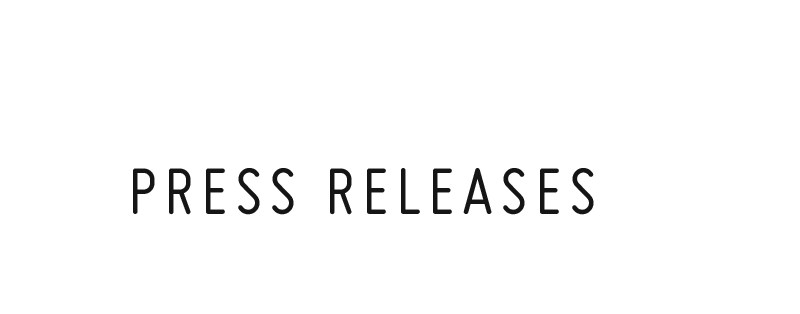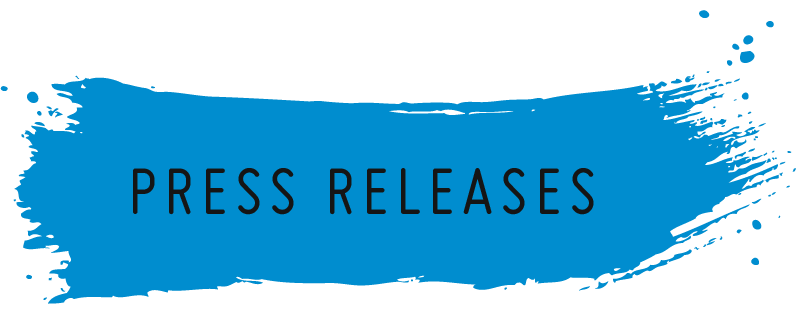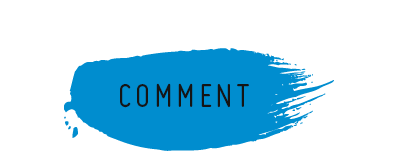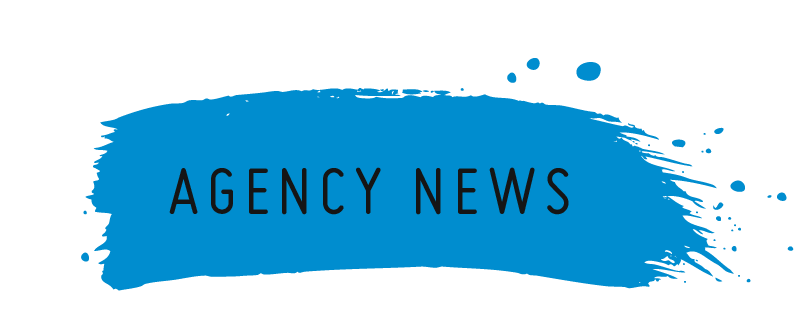- 3D Print Bureau
- 6K
- Agmatix
- Airwayz
- AM-Flow
- Appadda
- Caracol
- CG Trader
- CyberOptics
- e-Xstream
- GenCell
- GreenEye
- Impossible Objects
- Incus Media
- InkBit
- ITG
- JPB Systeme
- KeyProd
- Landa
- LEO Lane
- Lumet
- Magic Software
- MakerBot
- Marketiger
- Nano Dimension
- Paragon Rapid Technologies
- PearlX
- Plant & Bean
- Redefine Meat
- Replique
- Ripples
- Sakuu Corporation
- SolarEdge
- StoreDot
- Stratasys
- Sunrock
- The Bespoke Group
- Trigo
- UltiMaker
- Xjet
FRENCH HOSPITAL ENHANCES COMPLEX KIDNEY CANCER SURGERY PLANNING WITH STRATASYS COLOR MULTI-MATERIAL 3D PRINTING
CHU Bordeaux is one of the first hospitals worldwide to pioneer kidney tumor removal by using 3D printed color multi-material models pre-surgery to locate depth of kidney tumors
3D printed models used as big driver to train tomorrow’s surgeons
Easier visualization of their own organ increases patient understanding of procedures by up to 50%
Minneapolis, MN & Rehovot, Israel – October 19, 2015 – Stratasys Ltd. (Nasdaq:SSYS), the 3D printing and additive manufacturing solutions company, today announced that its color, multi-material technology is being successfully deployed to aid cancer surgeons in treating patients. Physicians use the models during pre-surgery planning of complicated kidney tumor removal, helping to perform precise and successful kidney-sparing surgery and improving patient outcomes. The 3D printed models are also used to improve surgeon training, as well as enhancing the explanatory process towards patients.
The advanced surgical process, which utilizes transparent and color 3D printed models produced on Stratasys’ color, multi-material 3D Printer, the Objet500 Connex3, is being pioneered by the Department of Urology and Kidney Transplantation at the University Hospital (CHU) de Bordeaux, in France. According to CHU surgeon Dr Jean-Christophe Bernhard, this is currently the only hospital in France – and one of the first in the world – to deploy Stratasys’ multi-color, multi-material 3D printing technology for complex kidney tumor removal cases.
“Having a 3D printed model comprising the patient’s kidney tumor, main arteries and vessels – each in a different color – provides an accurate picture of what we will see during operations,” says Dr Bernhard.
“Importantly, the ability to visualize the specific location of a tumor in relation to these other elements, all in three dimensions, greatly facilitates our task and is not something that is easily achievable from a 2D scan,” he adds.
Increasing the opportunity for kidney-sparing surgery
According to Dr Bernhard, the clearer view offered by the 3D printed model may increase the ability to perform precise and successful kidney-sparing surgery. The pre-surgery planning aids in identifying and avoiding damage to the delicate nearby arteries and vessels which can result in complete kidney removal. Sparing the patient’s kidney is important because it reduces the chance of subsequently suffering from chronic kidney disease.
“3D printing technology has effectively heralded a new dawn,” continues Dr Bernhard. “A scan gives us good information, but it’s in 2D. This relies on the surgeon to mentally reconstruct the tumor volume in 3D and estimate its location inside of the total volume of the kidney. The same process has to be done to clearly understand the relations between the tumor, the vessels (arteries and veins) and the collecting system. As you can imagine, this is difficult and time-consuming for the surgeon.
“Conversely, having a 3D printed kidney model in your hands that corresponds specifically to that of the patient you’re going to operate on quite literally offers me a view from a new perspective. The only thing more accurate than that is the patient himself,” he adds.
The CHU de Bordeaux uses three Stratasys PolyJet materials: transparent VeroClear to show the volume mass of the kidney itself, red for the arteries and yellow for the excretory tract. The red and yellow is then mixed on-the-fly – unique to Stratasys multi-material capabilities – to produce the all-important orange color of the tumor.
“The Stratasys transparent material is of fundamental importance as it allows us to see inside and estimate the depth at which the tumor resides,” explains DrBernhard. “It enables us to see the arteries and the cavities that collect urine, so we can see if any of the arteries are touching the tumor. We need to remove the tumor, but not at the expense of the other vital elements that together enable the kidney to do its job. Finding that balance is much easier to achieve thanks to 3D printing.”
Dr Bernhard also believes that use of 3D printed models will not be restricted to kidney surgery, and sees them being equally useful for any organ sparing surgeries.
Training the surgeons of tomorrow
Stratasys 3D printing solutions also significantly strengthens the CHU’s capabilities from an instructional standpoint. For Dr Bernhard, this is a fundamental benefit of 3D printing and one that he sees making a big impact within the medical sector long-term.
“I think this technology will be a big driver in terms of shaping the future of teaching and surgical training”, he says. “Having access to a 3D printed model that is completely accurate to the one that you’re going to operate, not only enables you to train yourself on the operation, but it also greatly improves our ability to more accurately convey surgical procedures to students – who of course are the surgeons of tomorrow.”
Reassurance by improved patient understanding
Another major benefit for the CHU of Bordeaux and Dr Bernhard is the ability touse the 3D printed models to more easily explain procedures to patients prior to surgery, thereby offering increased reassurance.
“Describing kidney tumor removal with 2D scan or a diagram will invariably leave most patients somewhat bewildered,” he explains. “Presenting them with a 3D printed model that clearly shows the tumor puts them at ease and enables the patient to grasp exactly what we’re going to do. Indeed, research from patient questionnaires shows that having 3D printed models increases their understanding of the surgery by more than 50%, so it’s a considerable benefit in terms of overall patient care.” (1)
Commenting on the use of 3D printing technology at the hospital, Scott Rader, General Manager of Medical Solutions at Stratasys, says, “By putting exactly what the surgeon needs to see right in his hands, the pioneering use of Stratasys color multi-material 3D printing technology at the CHU de Bordeaux demonstrates its capability to improve medical operations by decreasing complexities to make the surgeon’s role easier. Moreover, by enhancing procedures in this way, the prospect of organ–conserving surgery is increased, resulting in a far more favorable outcome for patients.”
(1) Bernhard JC, Isotani S, Matsugasumi T, et al. Personalized 3D printed model of kidney and tumor anatomy: a useful tool for patient education. World J Urol. 2015 Jul 11.
-
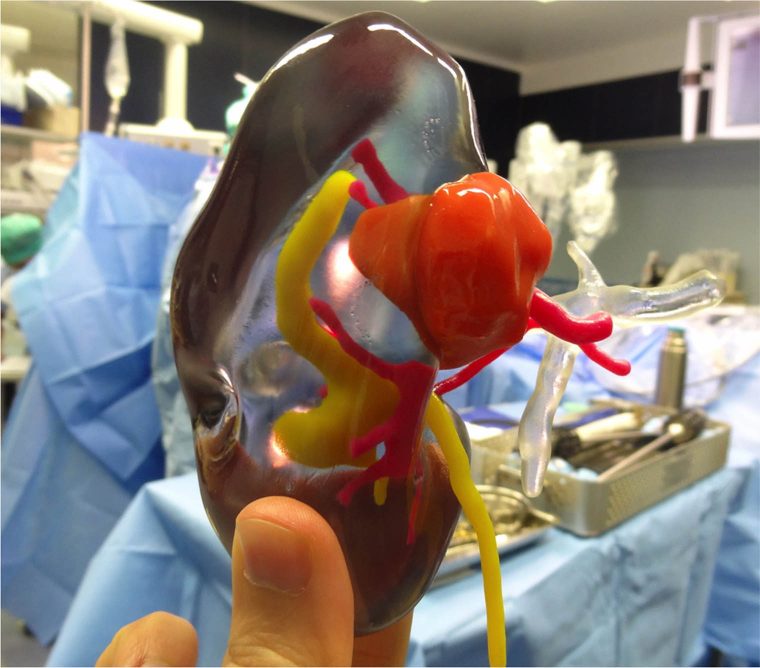 Using Stratasys’ transparent VeroClear material enables Dr Bernhard to see inside the kidney and estimate the specific location and depth at which the tumor resides
Using Stratasys’ transparent VeroClear material enables Dr Bernhard to see inside the kidney and estimate the specific location and depth at which the tumor resides
Click here to download 300dpi images -
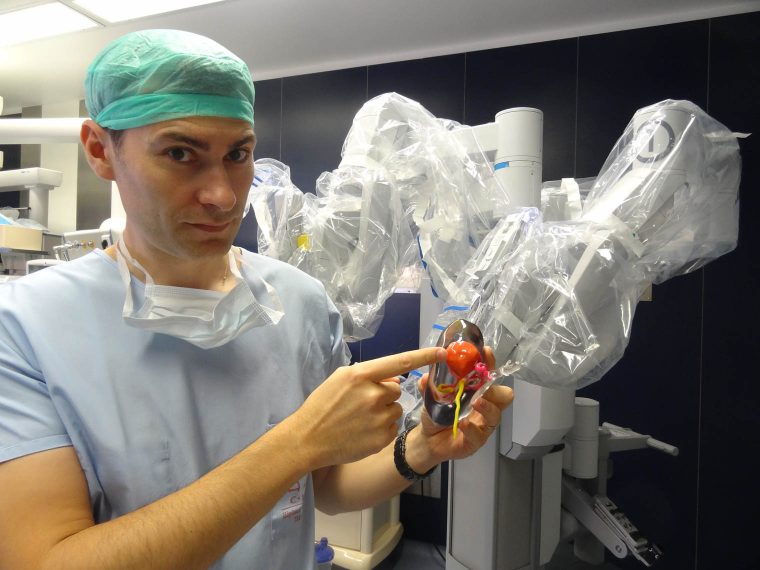 For Dr Bernhard, the only thing more accurate than a multi-material color 3D printed model of a patient’s kidney is the patient himself
For Dr Bernhard, the only thing more accurate than a multi-material color 3D printed model of a patient’s kidney is the patient himself
Click here to download 300dpi images
UN HÔPITAL FRANÇAIS AMÉLIORE LA PLANIFICATION CHIRURGICALE COMPLEXE DU CANCER DU REIN GRÂCE À L'IMPRESSION 3D COULEUR MULTI-MATÉRIAUX STRATASYS
Le CHU de Bordeaux est l’un des premiers hôpitaux dans le monde à étudier le retrait des tumeurs rénales à l’aide de modèles multi-matériaux en couleur imprimés en 3D permettant de localiser la profondeur des tumeurs
Modèles imprimés en 3D utilisés pour former les chirurgiens de demain
La meilleure visualisation par le patient de son propre organe augmente sa compréhension de la procédure de 50%
Minneapolis, MN & Rehovot, Israël – 19 octobre 2015 – Stratasys Ltd. (Nasdaq:SSYS), l’entreprise de solutions d’impression 3D et de fabrication additive, annonce aujourd’hui que sa technologie multi-matériaux couleur unique est utilisée avec succès par les chirurgiens qui traitent les cancers. Les médecins utilisent les modèles pour planifier le retrait complexe d’une tumeur au rein, exécuter des opérations de retrait de tumeurs précises et améliorer les résultats de ces opérations pour les patients. Les modèles imprimés en 3D permettent également d’améliorer la formation des chirurgiens ainsi que le processus d’explication aux patients.
Le processus chirurgical de pointe, qui utilise des modèles imprimés en 3D en couleur et transparents produits sur l’imprimante 3D multi-matériaux couleurObjet500 Connex3 de Stratasys, est en cours de lancement au Département d’urologie et de transplantation rénale de l’Hôpital universitaire (CHU) de Bordeaux, en France(1). Selon le Dr Jean-Christophe Bernhard, chirurgien au CHU, c’est actuellement le seul hôpital en France, et l’un des premiers au monde, à employer la technologie multi-matériaux couleur de Stratasys pour les cas complexes de retrait de tumeurs rénales.
« Le fait de disposer d’un modèle imprimé en 3D représentant la tumeur du patient, les artères et les vaisseaux principaux, chacun d’une couleur différente, donne une image précise de ce que nous allons voir au cours de l’opération », déclare le Dr Bernhard.
« La possibilité de visualiser la localisation précise d’une tumeur par rapport aux autres éléments, et en trois dimensions, facilite grandement notre tâche, car cela n’est pas facile à obtenir d’un scan en 2D », ajoute-t-il.
Augmenter les chances de réussite d’une intervention de préservation du rein
Selon le Dr Bernhard, la vision approfondie que permet le modèle imprimé en 3D peut augmenter les possibilités de réaliser une opération chirurgicale du rein précise et réussie. La planification préalable à l’opération permet d’identifier et d’éviter les dommages sur les artères et les vaisseaux adjacents, susceptibles de survenir lors d’un retrait total du rein. Le fait d’épargner le rein du patient est vital, car cela réduit les possibilités de souffrir de troubles rénaux chroniques.
« La technologie d’impression en 3D annonce effectivement une nouvelle ère », poursuit le Dr Bernhard. « Un scan donne de bonnes informations, mais seulement en 2D. Le chirurgien doit reconstruire mentalement le volume en 3D de la tumeur et estimer sa localisation dans le volume total du rein. Ce même processus a lieu pour comprendre clairement les relations entre la tumeur, les vaisseaux (artères et veines) et le système collecteur. Comme on peut l’imaginer, il s’agit d’un processus difficile et long pour le chirurgien.
« À l’inverse, le fait de disposer d’un modèle de rein imprimé en 3D, correspondant spécifiquement à celui du patient à opérer, me permet d’avoir un point de vue totalement différent. La seule chose plus précise que le patient lui-même », ajoute-t-il.
Le CHU de Bordeaux utilise trois matériaux PolyJet de Stratasys : VeroClear transparent pour représenter la masse du rein, rouge pour les artères et jaune pour le tractus digestif. Le rouge et le jaune sont alors mélangés à la volée pour produire la couleur orange représentant la tumeur. Cette capacité de mélange n’existe que chez Stratasys. Actuellement, les scans des patients sont envoyés à l’institution médicale japonaise partenaire de l’hôpital, où les modèles sont imprimés en 3D et envoyés au CHU de Bordeaux pour la planification chirurgicale.
« Le matériau transparent de Stratasys est fondamental puisqu’il nous permet de voir à l’intérieur et d’estimer la profondeur à laquelle se trouve la tumeur », explique le Dr Bernhard. « Il est ainsi possible de voir les artères et les cavités qui collectent l’urine, afin de déterminer si l’une des artères est en contact avec la tumeur. Nous devons éliminer la tumeur, mais sans pour cela endommager d’autres composants vitaux qui permettent au rein de réaliser ses fonctions. Cet équilibre est beaucoup plus facile à atteindre avec l’impression 3D. »
Le Dr Bernhard pense également que l’utilisation de modèles en 3D ne peut se limiter à la chirurgie rénale et peut être tout aussi utile pour les opérations sur tous les organes.
Former les chirurgiens de demain
Les solutions d’impression 3D de Stratasys renforcent également considérablement les capacités du CHU du point de vue de la formation. Pour le Dr Bernhard, il s’agit d’un bénéfice fondamental de l’impression 3D qui aura un fort impact sur le secteur médical à long terme.
Il déclare : « Je pense que cette technologie sera l’un des moteurs de l’enseignement et de la formation en chirurgie de l’avenir. Disposer d’un modèle imprimé en 3D totalement semblable à l’organe que vous allez opérer, non seulement vous permet de vous former à l’opération, mais améliore aussi fortement votre possibilité de transmettre vos connaissances aux étudiants chirurgiens, qui sont bien sûr les chirurgiens de demain. »
Des patients rassurés par une meilleure compréhension
Un autre bénéfice majeur pour le CHU de Bordeaux et le Dr Bernhard est la possibilité d’utiliser les modèles imprimés en 3D pour expliquer plus facilement les procédures aux patients avant l’opération, ce qui permet de les rassurer.
« La description du retrait d’une tumeur rénale à l’aide d’un scan ou d’un schéma en 2D laisse généralement la plupart des patients quelque peu perplexes », explique-t-il. « Leur présenter un modèle en 3D qui montre clairement la tumeur les met à l’aise et leur permet de comprendre exactement ce que nous allons faire. Un questionnaire diffusé à des patients montre en effet que la vision de modèles imprimés en 3D augmente leur compréhension de l’opération de plus de 50 % : il s’agit d’un bénéfice considérable en termes de soins généraux aux patients. » (2)
À propos de l’utilisation de la technologie d’impression en 3D à l’hôpital, Scott Rader, responsable des solutions médicales de Stratasys, commente : « En mettant dans les mains du chirurgien exactement ce qu’il a besoin de voir, l’utilisation novatrice de la technologie d’impression 3D multi-matériaux couleur de Stratasys au CHU de Bordeaux démontre sa capacité à améliorer les opérations chirurgicales en diminuant leur complexité, pour faciliter le rôle du chirurgien. En outre, en améliorant ainsi les procédures, la perspective depréserver l’organe pendant l’acte chirurgical augmente, ce qui entraîne un résultat bien plus favorable pour les patients. »
(1) Le développement des modèles est réalisé grâce à une collaboration internationale entre le Service de Chirurgie Urologique du CHU de Bordeaux, de l’Institute of Urology à l’University of Southern California (LA, USA) et le service d’Urologie de l’Université Teikyo (Tokyo, Japon).
(2) Bernhard JC, Isotani S, Matsugasumi T, et al. Modèle de rein et anatomie des tumeurs personnalisés imprimés en 3D : un outil utile pour l’éducation des patients. World J Urol. 11 juillet 2015.
-
 Le matériau VeroClear transparent de Stratasys permet au docteur Bernhard de voir l'intérieur du rein et d'estimer la localisation précise et la profondeur de la tumeur
Le matériau VeroClear transparent de Stratasys permet au docteur Bernhard de voir l'intérieur du rein et d'estimer la localisation précise et la profondeur de la tumeur
Click here to download 300dpi images -
 Pour le Dr Bernhard, la seule chose plus précise qu'un modèle imprimé en 3D multi-matériaux en couleur du rein d'un patient est le patient lui-même
Pour le Dr Bernhard, la seule chose plus précise qu'un modèle imprimé en 3D multi-matériaux en couleur du rein d'un patient est le patient lui-même
Click here to download 300dpi images
